Introduction
In a digital age, where the average person is bombarded with notifications and messages on an almost hourly basis (and has access to nearly infinite streams of information), maintaining focus can be incredibly difficult. No surprises here — distractions are everywhere: from the smartphones that ping incessantly to open tabs on your computer screen, each one vying against everybody else. This distractions not only waste your time, they also disrupt you and its difficult to come back in workflow. Not only do tasks fail to get done, they are also generally completed over longer periods of time with lower quality and a lot more stress. Certainly it is important for anyone who wants to achieve greatness and maximise productivity whilst protecting their mental health from the distractions. – Reducing Distractions
It is not just removing distractions like turning off notification or finding a quiet place to work. It is about knowing how you are distracted, making a habit of it so your focus can be preserved and crafting an environment that limits the interruptions. The primal skill to just simply focus super hard on what you are doing, or deep work as its so badly called in the modern world is getting more and scarce but also a greater leverage point. Thankfully, there are resources that can assist you in developing this skill. So, we will now look at five books that contain practical strategies and ideas around how to reduce distractions from all the things happening in our lives. This is exactly what these books are — they provide you with the practical tools to take control of your focus, make good use of it and create an environment that aligns perfectly well with how you want to live.

Reducing Distractions
Distractions can be a headache, though dealing with them (and improving at it) is both learnable and achievable in time. These are some of the best books written on how to minimize distractions, find focus and create an environment that is conducive for deep work. – Reducing Distractions
1. “Deep Work: Rules for Focused Success in a Distracted World” by Cal Newport
Summary:
Out of all the books written on productivity and detaching from distractions, Deep Work by Cal Newport is considered as a holy grail for this purpose. This is because, Newport says: Deep work — professional activities performed in a state of distraction-free concentration that push your cognitive capabilities to their limit. Newport argues that the individuals who are able to develop this skill of performing deep work will excel in both their work and personal lives. He offers specific tactics for how to cultivate deep work, and includes ways that we can all cut out the distractions holding us back from pursuing our full potential.
Key Lessons:
- Deep Work is Important: Newport writes how deep work can lead to exceptional levels of performance and achievement, high-quality learning in less time or complex conceptual understanding. Meanwhile, most people’s workday is filled with “shallow work:” tasks that are easy but don’t require much cognitive effort. Shallow work is something that traders can deal with and should not be allowed to occupy their time at the cost of deep work.
- Time Blocking for Deep Work: Here are the different approaches to time blocking that Newport encourages, specifically noting this framework is one of his most successful strategies for deep work. This technique serves as a barrier that prevents distractions from eating into your time, while enabling you to command 100% of each focus period for important tasks without interruption. When you make time for deep work, you commit to working on your hardest and most rewarding projects.
- No More Shallow Work: Newport discusses the concept of deep work versus shallow work. He argues for a commitment to reducing shallow work — tasks that are easy, if not altogether mindless, tracking towards whichever longer-term goal you’re working on. You remove as much of the shallow work from your schedule as you can to make deep apace. It could mean delegating, automating or batching shallow tasks so they never manage to intrude upon your deep work rituals.
- Information Overload: The idea of digital minimalism and reducing your distraction footprintDisplacing the value of knowledge by availability This can range from keeping away social media, turning off non-essential notifications or just some plain cleaning up of your digital workspace. Which brings me to the topic of digital minimalism, specifically choosing how and when you use technology with an effort in having it be used as a means rather than an end.
- Building Rituals and Routines: To help you get into the deep work mode, Newport advises structuring your day with rituals or routines to signal the beginning of each session. These rituals might be setting up your workspace in a certain way, having a routine to go through before you commence working or being at an agreed space. Rituals allow your mind to move into a state of focus, and therefore they help you more consistently get into deep work mode.
Practical Application: Step #1: Identify the Proportions of Your Life that Deserve Deep Work We already addressed this, but in order to apply anything from “Deep Work” — you need some idea as to what things on your plate require deep focus and are proportionally much more meaningful towards where you want your life end up long-term. Book time every day specifically for these tasks and protect that space. Start practicing digital minimalism by examining your behaviours and committing to more focused, orchestrated distractions — like spending less time on Instagram or silencing notifications. Increase regularity by developing rituals in your life, scaffold yourself up until you can make deep work be a part of the rhythm that works longest. These habits will over time help you create the ability to simply do deep, focused work which yields in higher productivity, better quality results and more satisfaction from your work.
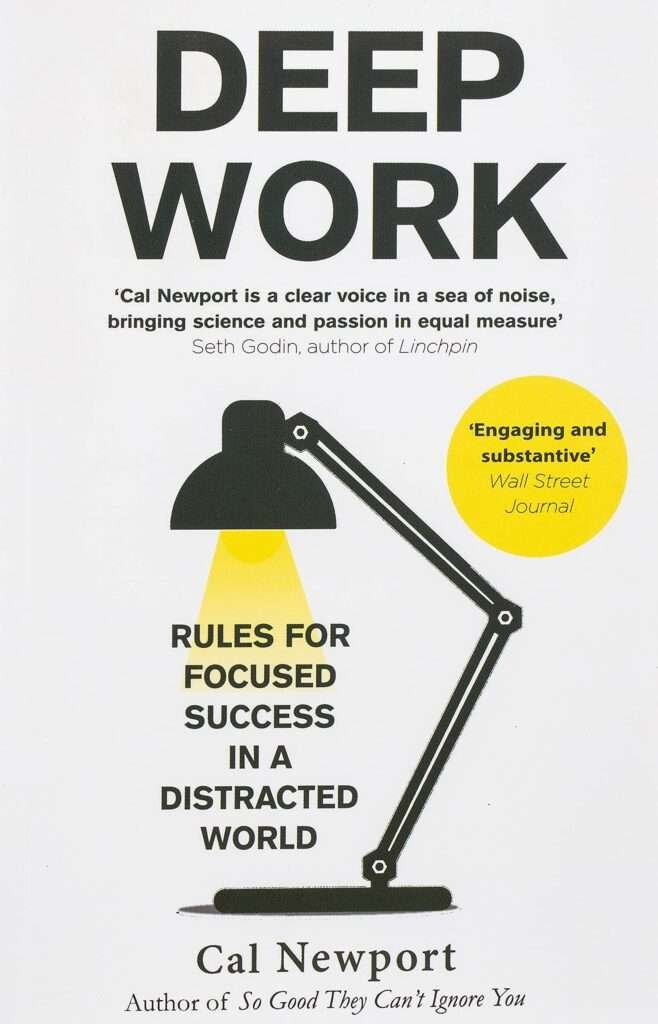
2. “Indistractable: How to Control Your Attention and Choose Your Life” by Nir Eyal
Summary:
In this article you will learn the psychology of distractions by reading in distractable can help to control your attention and actions. Eyal identifies the internal and external triggers that keep our minds pre-occupied, causes distractions and offer you a few steps to overcome them. The books focuses on identifying the root causes of distractions and provides resources that can help you maintain your focus wherever it needs to be.
Key Lessons:
- Eyal on Internal Triggers: Eyal talks about the notion of internal triggers and how a lot of times being distracted is driven by emotional states. Emotions such as boredom, anxiety or stress. When these type of feelings start creeping up, it is easier to distract ourselves with social media or email. If you can identify these triggers, and then deal with them effectively in the real world (so that they don’t lead to distractions), this is a huge step forward. To control internal triggers, Eyal recommends strategies including mindfulness and self-compassion to keep you on the path of doing your work.
- Techniques for time management: Eyal presents some good quality on that subjects, as the technique time boxing in which is created boxes with determined periods where you gonna do only a specific task. Time boxing helps you to create plans and stick with your time commitments for dealing with tasks by setting specific amounts of concentrated effort on those activities. Eyal also suggests making “implementation intentions” — process of planning responses to avoid distractions. If you precommit to the antidote, when that distraction crosses your path it won’t have power over you.
- Institutionalizing External Constraints: Eyal also recommends putting institutionalized constraints in place against distractions like using website-blocking apps when you are supposed to be working, and putting your self into an environment that is designed for focus. In other words, it prevents you from getting distracted. All these constraints are like trips which prevent a misstep. E.g., you could install website blockers such as Freedom or Cold Turkey to prevent yourself from engaging in social media during deep work sessions.
- Utilize the Power of Precommitments: One of the techniques that Eyal cans are precommits or making deals and setting boundaries to stop yourself from using distracting activities. This could be as simple as agreeing with a friend you will complete something by X time or an agreement to not check your phone during meetings. Through precommitments, accountability can be created which makes it easier to fight off distractions that come your way.
- Distraction-Free Workspaces: Colemak Spacebar uses a technique from Nir Eyal to design distraction free workspaces. It may look like keeping your space uncluttered, utilizing noise-canceling headphones so that you can better concentrate or even putting up a proverbial “do not disturb” above your desk for coworkers. A tidy workspace supports focus and provides the mental clarity of deep work.
Practical Application: To apply the lessons from “Indistractable,” begin by identifying your internal triggers and finding healthy ways to cope with them, such as through mindfulness, journaling, or physical activity. Use time boxing to structure your day, ensuring that you allocate time for both focused work and necessary breaks. Set up external constraints to limit distractions, such as using apps that block distracting websites or creating a workspace that minimizes interruptions. Make precommitments to yourself or others to hold yourself accountable for staying focused. By taking these steps, you can train yourself to become indistractable, maintaining control over your attention and achieving greater focus and productivity.
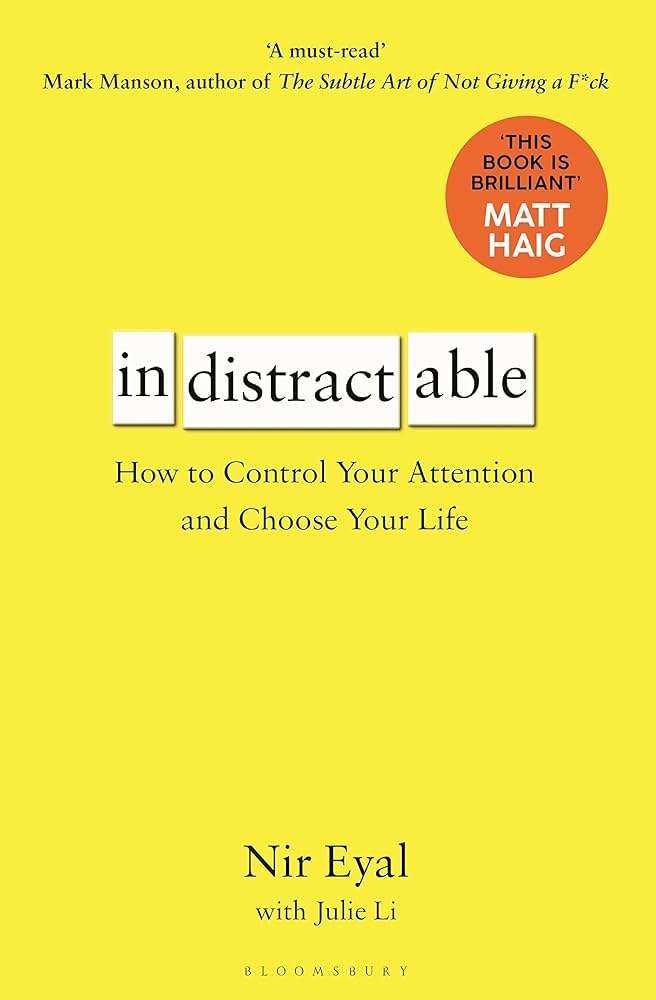
3. “Atomic Habits: An Easy & Proven Way to Build Good Habits & Break Bad Ones” by James Clear
Summary:
Although not exclusively focusing on minimizing distractions, James Clear’s Atomic Habits presents a potent system for creating lasting behavior adjustments (i.e. habits) that are necessary to restrict your attention as well. How to use Clear with Habit Formation UseClearBlocksCommentsWithSegmentation can be applied when creating habits aimed at reducing distractions and improving productivity. In this book, I offer prctical strategies for setting up an environment that encourages focus and minimises distractions on your workload.
Key Lessons:
- The Habit Loop: In the book clear explains what a habit is and how it consists of 3 processes — cue, routine and reward. Knowing this habitual loop helps you recognize the cues that trigger distractions and replace those routines with something productive. If, for example, your cue is phone notification leading into distraction of social media checking — you can modify the routine to be silencing notifications and as a reward — taking those short breaks after finishing 1 block.
- In Clear, he introduces a strategy called Habit Stacking: associating new habits with existing one. But you can also apply the technique to build habits for minimized distractions, like only checking emails once a deep work session has been completed. You make new habits easier to adopt and maintain by stacking a productive habit on top of an existing routine.
- Design the Environment: If you want to drastically increase your odds of success, then you need to stretch or shrinks space around yourself so that it’s easier for useful things/ habits and bad things/habits. For example, this could mean cleaning up your workspace to reduce distractions (e.g. a clear desk), arranging tools properly or moving things that you know distract you from work out of the way. A distracted environment supports a scattered mind, whereas a purposeful one creates foundations for clear intention and action.
- Two-Minute Rule: Clear refers to this as the two-minute rule — if a task takes less than two minutes, do it now. You can utilize this rule to efficiently manage unexpected disturbances, like sending a timely email or tidying up something from your desk that would otherwise haunt you and interfere with focus time later. You take care of the small things as they pop up, so you prevent them from piling up turning into bigger distractions.
- Gradual Improvement: Clear believes that it is important to focus on small, gradual improvements rather than trying large changes at one go. Over time, you can eliminate distractions by creating small changes in your habits and environment that will allow for better concentration. Minor, incremental tweaks balance out over time to substantial changes when implemented regularly, which is a useful way to think about effort.
Practical Application: If you want to put into practice the strategies covered in “Atomic Habits,” identify what habits are contributing to distractions on a day-in, day-out basis. Apply the habit loop, understanding their cues, routines and rewards with these habits…try to replace the routine part of that (bad)habit ex: drinking soda in your lunch breaks at work….Experiment a more productive behaviour. Try habit-stacking habits that can help you be less distracted, some examples are : muting notifications or setting a timer before starting to block sessions. Visual representation of work environment compliance Focusign Up Design|Make Your Workspace, Organized & Free. Use the Two-Minute Rule to knock out small things that could become fires if you let them get too big. Eventually, these small changes are going to add up and on average leave you with a more productive day.
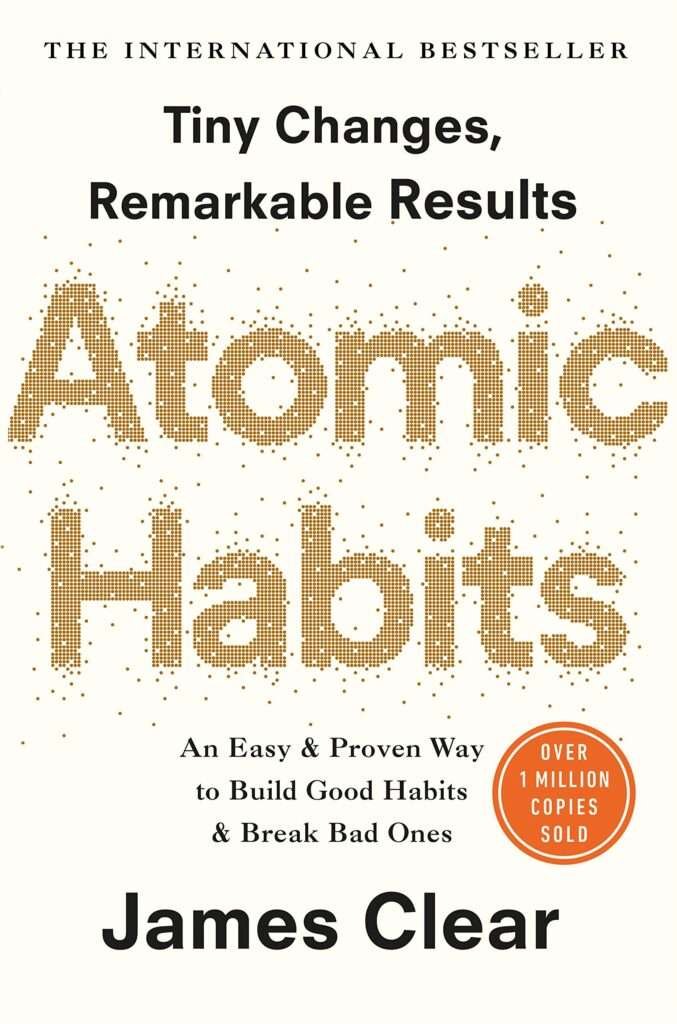
4. “The Power of Habit: Why We Do What We Do in Life and Business” by Charles Duhigg
Summary:
The Power of Habit (Charles Duhigg): The Science Behind Why Habits Hold the Power to Change Our Lives According to Duhigg, our most common distractions are stale and have become a habit— checking social media 12 times a day or putting off for tomorrow what should be done today—and those sorts of non-productive activities. In this way by recognising the habit loop — cue, routine and reward – you can work out what bad habits cause us to become distracted then overwrite these routines with tasks that foster focus. – Reducing Distractions
Key Lessons:
- Habit Loop: Duhigg describes the habit loop which is triggered by a cue, followed by a routine and rewarded with some benefit. If you understand this loop, it makes sense that if you can identity what cues your distractions and change those routines. If the cue throwing you off your productivity game is boredom, and then routine of checking social media to break that emptiness cycle; try substituting a walk or ~5 minutes mindfulness exercise which still provides room for some reward.
- Keystone Habits: The book brings awareness to keystone habits — they are miniscule shifts or practices that can have far-reaching positive consequences in other aspects of your life. Keystone habits like exercising, eating well or meditation in the morning can help you fight stress and will allot more focus time to face less distractions.
- Establishing New Routines: Duhigg offers solutions to create fresh routines in order for us to stop replacing bad behaviors with good ones. You can do this by identifying the cues that trigger your distractions and then creating new routines with similar rewards, so you break out of them cycle of distraction and develop habits to be more productive. You could, for example replace your desire to check the phone with some deep breathing or stretching instead.
- The Golden Rule: Duhigg stresses in order to change a habit you must keep the old queue and reward but replace routine. It is rule known as the Golden Rule of Habit Change — keep the same cue and reward but change behaviour. Simply target a new variation in order to break your routine without sacrificing the reward that comes with the habit!
- Belief and habit change: Duhigg also mentions belief in keeping up the discipline to sustain a new good-ole-habit. In the long run, it is important that you believe that what you do can be changed and broken. We can support these beliefs again with the social model, positive self-talk and little wins. It is faith that enables you to stick through the lows while attempting distraction free and focusing as much one can.
Practical Application: In order to apply the teachings of The Power of Habit, you need to first identify what these habit loops are in your life that cause distractions. Identify triggers of those distractions and try new habits in place instead. For instance, if you catch yourself compulsively reaching for your phone when a wave of boredom hits give that time to going on even a short little walk round the block / some deep breathing exercises or perhaps make hot coco before hunkering down and getting into rem.graphs next fix. Work on the keystone habits which will effectively underpin your growth; exercise, eating unprocessed foods and meditation are good examples-being fit physically is a cumulative effect of feeling healthier overall. To change your habits, follow the Golden Rule of Habit Change: do not eliminate cues or rewards; keep them constant and play around with routines. That way the new habits will not only diminish distraction and boost attention but they will also create a work environment that is much more productive — and engaging.
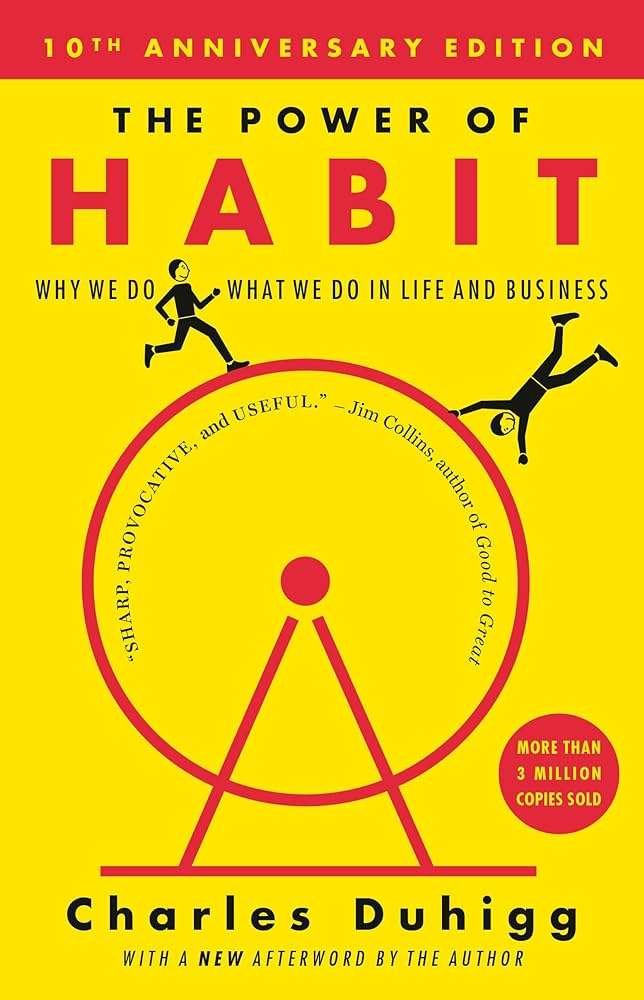
5. “The Willpower Instinct: How Self-Control Works, Why It Matters, and What You Can Do to Get More of It” by Kelly McGonigal
Summary:
Kelly McGonigal writes about the science of self-control and how to use it for willpower in order to burn out distractions, become more focused and stop wasting time unconscious. Willpower is a muscle and with practice, she explains how we can use our will to overcome temptations that lead off-track- practical exercises to develop self-control. With the psychology of willpower in mind, you can devise effective strategies to prevent yourself from becoming distracted and losing concentration so that you may reach your goals. – Reducing Distractions
Key Lessons:
- The Science of Willpower: According to McGonigal, will power is like a muscle and becomes when you are under stress, decision fatigue (among other things). You can probably see how managing these things will help you have more restraint to apply to those tasks that demand higher focus and self-discipline. Recognizing the science of willpower equips you to opt for better working alternatives.
- Chapter on Mindfulness and Willpower: Explains how mindfulness enhances willpower. With mindfulness practice, you can start noticing your urges and deciding for yourself what to do with these possibilities of distraction. Through mindfulness, you can both take a breath and avoid burning yourself out or getting swept up by random Button Presses.
- Stress and Willpower:Stanford psychologist Kelly McGonigal explains how willpower works, why it matters that we have a limited amount of self-control at our disposal, the role stress plays in deciding whether to use or save your resolve and what you can do about it. Exercising, meditating, and getting a goodnight’s rest are other powerful tools in your toolkit that will help reduce stress so you can resist distractions. If you can manage stress, you preserve your willpower and focus for the rest of the day.
- The “What the Hell” Effect
- Forcing Willpower To Work For The Long Term: McGonigal stresses the importance of making willpower about long-term gratification rather than short term. If you set specific goals for yourself and then align your actions with those long-term objectives, willpower should become easier to manage. Another tool is visualization, through which you can help to embed the end goal for yourself and make your commitment stick more easily.
Practical Application: The first few being: Work on building your willpower and the second; lower distractions by practicing mindfulness to better understand when you are in an environment of distraction. To Help: Practice stress management (e.g. Regular exercises, meditation and getting enough sleep) to limit the effectiveness of your willpower-sapping high-stress on you. The next time you are tempted with a distraction, I hope that the memory of this cycle comes to mind, and your long-term thinking is what motivates you in how you react. Be kind to yourself when this happens and restrain from allowing small set-backs cause you to go off track entirely. By fortifying your willpower and directing it toward the goals that mean most to you, the ones that can give something of value in return for what they require from you (and not vice versa), you would be ableto stay on task longer without succumbing to distractions, which helps with being more productive while feeling fulfilled.
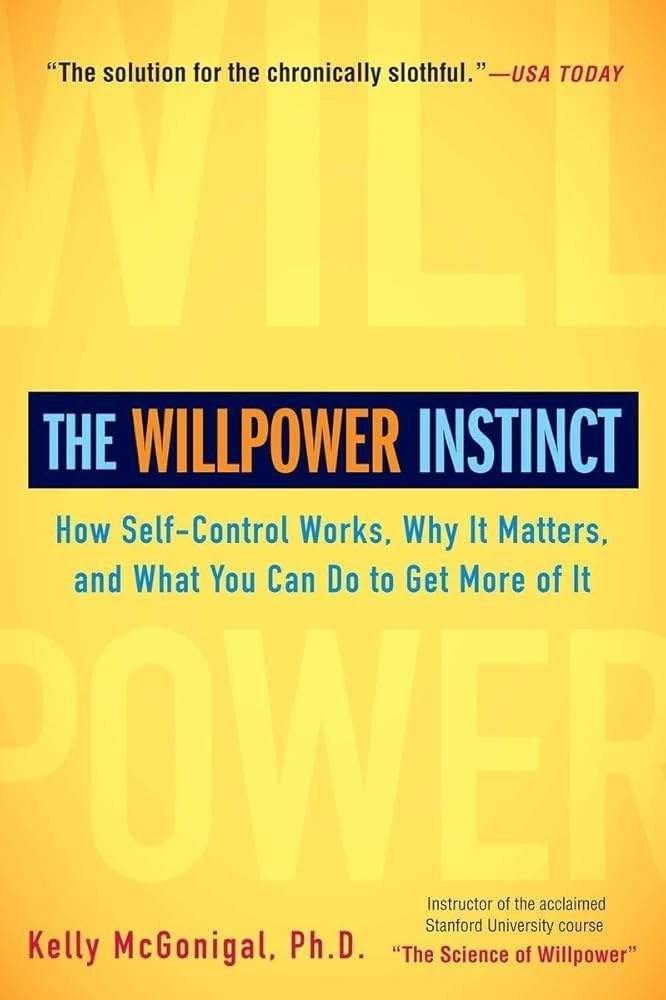
Why We Need This? | Reducing Distractions
Getting stuff done and focusing in an increasingly distracted world They not only are time-consuming but also kill the productivity and induces more stress. She said it best, because learning about distraction & eliminating them is vital to anyone who wants o achieve their goals better productivity and start hustle life.
Nonetheless, distractions insistently affect our whole life – from personal to professional one. On the job, distractions can result in missed deadlines, diminished quality or focusing under pressure. Internally, getting so easily distracted can keep you from even enjoying the time with your friends and family amidst spending it on hobbies or pushing for personal growth as well. Notifications, emails and digital interruptions are continuous which result in overwhelm and make it hard to focus on important tasks.
Also, distractions can be guilty of decision fatigue – the overwhelming number of choices and disruptions in a day that drains your mental energy. That level of fatigue can also impede your ability to make effective decisions, follow through on tasks, and avoid even more distractions. This leads to a pattern of decreased productivity and increased stress leading in turn, over time, to lower well-being.
Learning to control distractions can free you up for what really matters in your life, and help reclaim time, attention focus. This will lead the way not only a more balanced life but also one of fulfillment and success both professionally as well as personally. The strategies outlined in these books offer real solutions to take control of your environment, habits and mind with instruments that put you better on the path toward fewer distractions and more focus. They provide a blueprint that enables you to overcome the hurdles of contemporary living, keeping focused without straying away from your goals by helping construct a life consistent with both what matters to you and how it is envisioned. – Reducing Distractions

How It Can Help in Our Life? What Is the Benefit? | Reducing Distractions
The benefits of minimizing distractions go far beyond just being more productive. You might be wondering how exactly this skill applicability would effect your every day life : here is the list of why mastering it, could make a HUGE difference in these areas:
- Boost Attention: You have improved focus as there are fewer distractions to distract you from essential tasks. Which translates into better work, faster turn-around times and more satisfaction. When you are concentrating, it is easier for you to get into flow: to really be in state of productivity, where your energy level and performance both will become the best they can possibly some times get Price when units margin Right: said simply It would feel as though time doesn’t event exist. Additionally, in creating such a strong focus, it leads to more creativity, problem solving and decision-making all means for better outcomes overall.
- More time devoted to meaningful work: The more you cut out that counterproductive shit, the quicker and efficiently accomplish things in less time. The increased productivity can result in much more success, both at work and in your personal life — you’ll be able to reach whatever goal it is that much quicker. As a result, remaining productive for more extended periods can help make strides in long-term projects and goals.
- Better Work-Life Balance: If you can control the distractions described in this article, work more efficiently and then enjoy your life with time for relationship-building personal activities. This way, you can keep a good work-life balance with wills which helps in de stressing and managing the overall health. Completing your tasks on time and with less of an effort to leave you a lot better private life without any pending future bothering you. Finding this balance will make your life more enjoyable and helps with better mental health, along the emotional sides.
- Improved Mental Wellbeing: Always being connected can result in feeling stressed, anxious and even burnt out. Having to task-switch frequently and respond quickly with interruptions can make us feel overwhelmed, and mentally tired. This way, this may help to suffering from these adverse effects and make better for your mental health. De-cluttered living environment provides you with the peace and power to restore life in mental well-baingans. emotionally. Sleep quality, anxiety levels and overall happiness can all improve through this mental clarity.
- A More Fulfilled Life: With more focus and less time wasted, it is almost impossible not to feel good about your decision; just think of all that personal satisfaction. One way to find that more lasting happiness and contentment is by setting yourself your own goals, running life on your terms. And when you focus on what actually means something to you, then the chance is pretty good that a lot of meaning and fulfillment will come flowing out into other parts of your life, like at work or in your relationships. Feeling fulfilled and living up to your highest self can produce sustainable happiness.
- Relationships: Becoming more present because you are reducing the distractions that allowed your mind to wander off encouraging a false sense of presence in relationships (often found at work, social interaction or life). The more present you are in conversations and activities with the people who matter, the better connections they will be. An ability to be there present and listening can help communication, reduce misunderstandings, as a result allow new experiences. Improving ability to stay in the present moment can make a team work more collaboratively and efficiently, as well as improve one’s leadership.
- Better Decision Making: With the help of a focused mind, it can make you sound to decide better and finely. Decreases the amount of competing stimuli in your mind and converts to better thinking and outcome aligned with long-term impact on key outcomes. This adds to better results both in personal and professional life due to the improved decision-making. This also lessens the odds of making rash decisions or poor mistakes that can result in undesired effects.
We apply the lessons from these books to build a life of productivity that is balanced, fulfilling and aligned with your values and goals. And minimizing distractions does almost nothing to make you more productive, but a great deal for enabling the best possible life — one that has thriving professional growth as well as personal relationships and room for development in every area. – Reducing Distractions
Why Books for This Case? | Reducing Distractions
As mentioned above, books provide an extensive look into the tactics for decreasing distractions and increasing focus. The book gives a more comprehensive view of the underlying principles than articles or short videos and will offer practical advice that you can implement in your life. They are a fantastic way to perfect the craft of minimizing distractions — here’s why books on distraction are some of the best things you’ll ever read. – Reducing Distractions
Key Reasons:
- Deep Learning: When you read books on such topics, they help you cover each and every area so that you can learn the science behind distractions as well what methodologies could mitigate them. It is an immersion in deeper learning which is required to learn the abilities necessary to reduce distractions, raise focus. They often explore distractions in the sense of psychology, neurology and behavioral aspects to give a complete overview of purpose.
- Concrete Approach: Books almost always have specific steps, tips, and exercises with anecdotal stories to apply principles in practice. These straightforward strategies are ready for you to apply today and will yield immediate results. Whether you are looking to learn new habits, update your workspace or increase willpower…. books can present you with the tools and tactics required for both inspiration & execution for long-term gains.
- Based on years of expert insights: A number of the books listed have been written by experts in their respective fields, such as psychology, neuroscience and productivity. In this post, seven authors share their evidence-based advice for overcoming distractions and getting more done. These experts provide you with the most current scientific research and strategies for controlling your distractions so that you can do what is best in life.
- Long-term reference: Books are resources we can come back to when needed. While you work on limiting distractions and perfecting focus, books read at a time can provide even more insight or strategies that readers could put to good use for years down the road. Related to this, books create a base somewhere for self-teaching; one can always come back and read those important ideas over again multiple times as needed while guiding you towards the realization your own changing ends.
- Context: Some books are specifically about some aspect of managing distractions, e.g. building habits or developing willpower, working on your own environment… This way you can pick books that speak to your unique challenges, and what is most important for a personalized distraction reduction. So whether you are overwhelmed by your digital devices, procrastinating in the face of a critical deadline or wanting to create an organisational culture that captures workflow — there is bound ever so slightly aside from learning how to write.
- Inspiration and motivation: just reading about other people who have managed to cut out distractions form their life, de-focus from unnecessary tasks can help you get motivated. Many stories and relevant case studies have gone into a book, including some of the examples where someone was able to completely script their life by simply implementing those strategies. They can help you be encouraged and inspired to start your journey of minimizing distractions and maximizing productivity. – Reducing Distractions
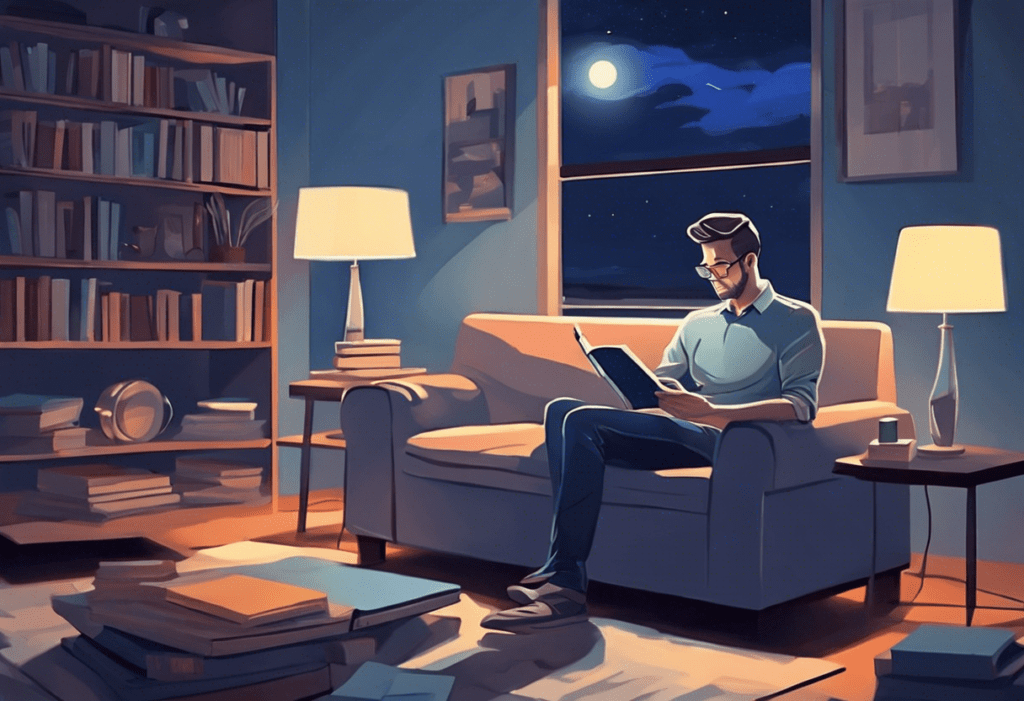
Conclusion | Reducing Distractions
In a world that moves fast, reducing distractions is one of the keys to being productive. Here, we review five of the most important books to help you reduce distractions and improve focus so that your work becomes purposeful with the right space created around it. No matter if you currently fight against digital distractions, habitual procrastination or external interruptions — these books come with the tools to help YOU reclaim your attention and achieve what really matters.
You will be able to hone your focus, refine your approach and have a better life when you improve on these lessons delineated through the pages of certain books. By decreasing distractions, you can improve your productivity and even contribute to a happier, more fulfilling life. As you hone these skills for managing distractions well, realize that the remaining time and energy represents new space to aspire toward peak success in everything that matters most.
These books can give you a guide or roadmap to be able to navigate the ebbs and flows of modern day life so that way you keep progressing towards your goals being steps closer and helping make sure your living in alignment with what is important. If you want to take your career, relationships or personal growth further forward, then lowering this noise is a natural next step for one who desires the power of intentionality and focus in their life. – Reducing Distractions
FAQs | Reducing Distractions
Q1: Can reducing distractions really improve productivity?
A1: Well, there is no exaggeration in saying that it can be as simple but impactful strategy to reduce the distractions for productive work. By ignoring distractions and staying focused on the task at hand, you will likely have a higher output of quality work after it’s all said and done. Studies have found that even a short interruption can lead to attention failure, and this increases the time it takes to perform tasks. When one can remove distractions, work more efficiently and effectively.
Q2: How can I start reducing distractions in my daily life?
A2: Begin by recognizing your common distractors – might be social media, email or noise generating environment. By strategies Time Blocking, Digital Minimalism and Habit Stacking to help you reduce your distractions. Start with little things like turning off notifications and only checking email at certain times; over time, you can work your way up to a more focused schedule. The key is repetition, so incorporate these strategies in your day to day routines.
Q3: What role does environment play in reducing distractions?
A3: Environmental distractions: This is one of the most critical factors. A neat environment can help you reduce distractions. Just because less stimuli are visible, does not mean they do no influence us — the more organized our external world (in this case a clean and quite work environment) is likely to help u focus on what we truly want. Keep everything clean and get rid of what you do not need in order to provide the perfect environment for work, without distractions. You may also want to set boundaries (like wearing noise-canceling headphones or putting up a do not disturb signal) that will keep people outside from encroaching on your focus.
Q4: Can mindfulness help in reducing distractions?
A4: It most certainly is, and in a way, mindfulness works wonders when it comes to distraction management. This is where mindfulness comes into play…Being mindful can help you identify thoughts and/or urges more quickly, helping to understand & manage distractions. Mindful breathing, body scanning and mindful breaks can also help keep your focus signals up throughout the day. Mindfulness also developed your emotional self-regulation and the power to resist distraction, so you are more focused on what needs doing.
Q5: How long does it take to see results from these strategies?
A5: The time it takes to see results can vary depending on your current habits and the strategies you implement. Some people may notice improvements in focus and productivity within a few days, while others may take a few weeks to fully integrate these strategies into their routine. Consistency is key, so stick with the strategies and make adjustments as needed to see the best results. Over time, as you practice these techniques and build new habits, you’ll likely experience significant improvements in your ability to manage distractions and stay focused.
Check Out The Sources
Check Out More

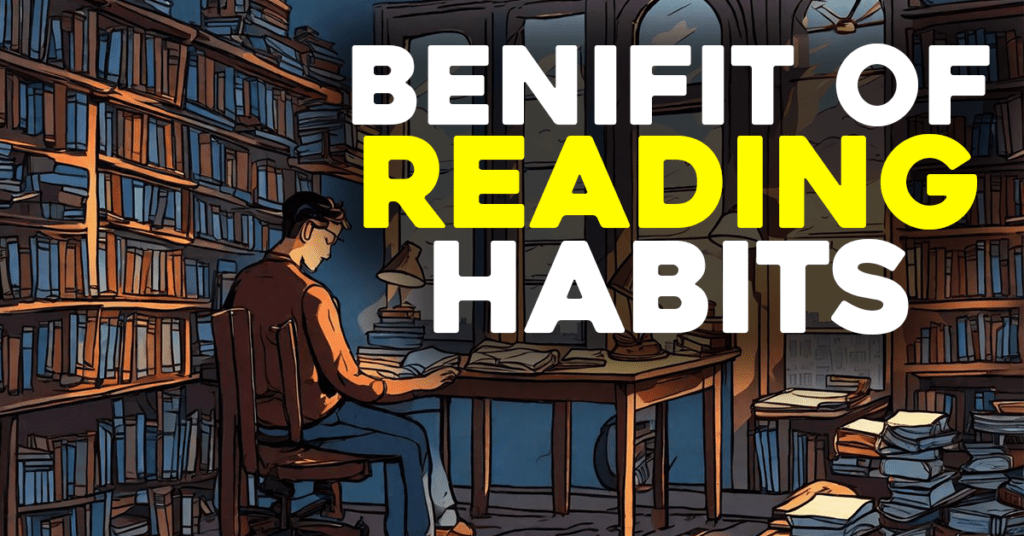
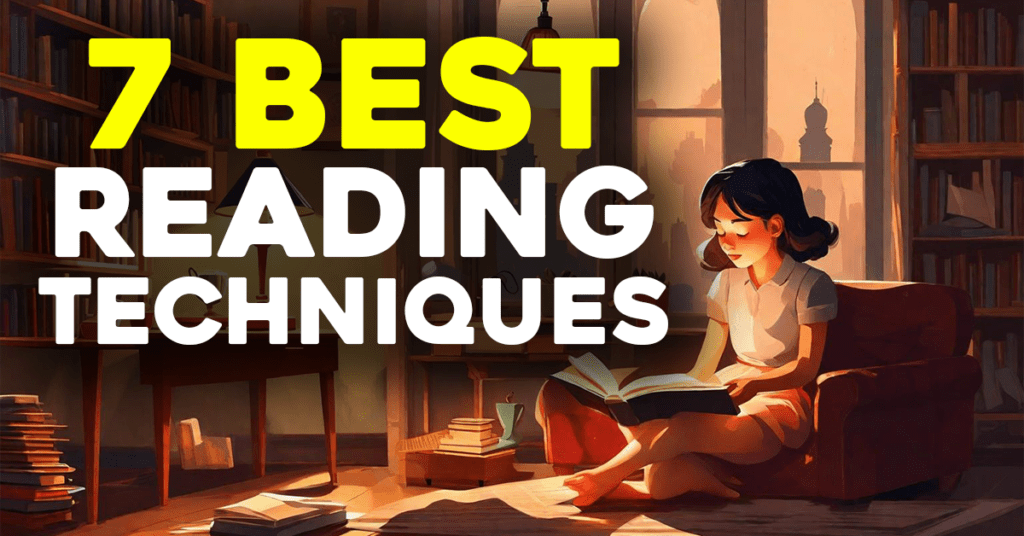
быстрый вывод из запоя ростов быстрый вывод из запоя ростов .
быстрый вывод из запоя ростов быстрый вывод из запоя ростов .
быстрый вывод из запоя ростов быстрый вывод из запоя ростов .
Как купить аттестат 11 класса с официальным упрощенным обучением в Москве